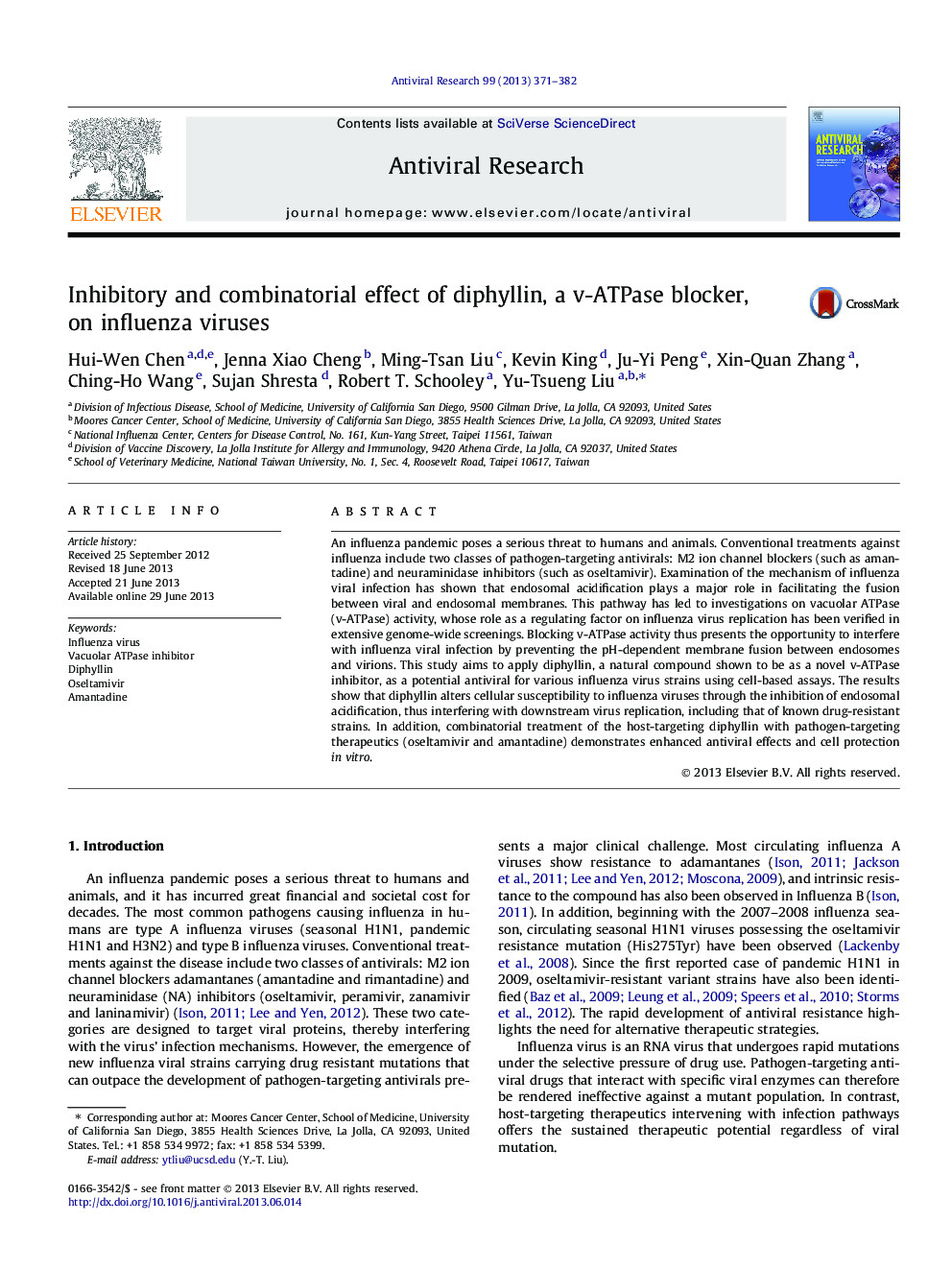| Article ID | Journal | Published Year | Pages | File Type |
|---|---|---|---|---|
| 2510074 | Antiviral Research | 2013 | 12 Pages |
•Diphyllin inhibits endosomal acidification in MDCK cells and A549 cells.•Treatment with diphyllin alters the cellular susceptibility to the influenza virus.•Diphyllin demonstrated a broad-spectrum antiviral activity.•The combination of diphyllin and other drugs showed an enhanced antiviral effect.
An influenza pandemic poses a serious threat to humans and animals. Conventional treatments against influenza include two classes of pathogen-targeting antivirals: M2 ion channel blockers (such as amantadine) and neuraminidase inhibitors (such as oseltamivir). Examination of the mechanism of influenza viral infection has shown that endosomal acidification plays a major role in facilitating the fusion between viral and endosomal membranes. This pathway has led to investigations on vacuolar ATPase (v-ATPase) activity, whose role as a regulating factor on influenza virus replication has been verified in extensive genome-wide screenings. Blocking v-ATPase activity thus presents the opportunity to interfere with influenza viral infection by preventing the pH-dependent membrane fusion between endosomes and virions. This study aims to apply diphyllin, a natural compound shown to be as a novel v-ATPase inhibitor, as a potential antiviral for various influenza virus strains using cell-based assays. The results show that diphyllin alters cellular susceptibility to influenza viruses through the inhibition of endosomal acidification, thus interfering with downstream virus replication, including that of known drug-resistant strains. In addition, combinatorial treatment of the host-targeting diphyllin with pathogen-targeting therapeutics (oseltamivir and amantadine) demonstrates enhanced antiviral effects and cell protection in vitro.
